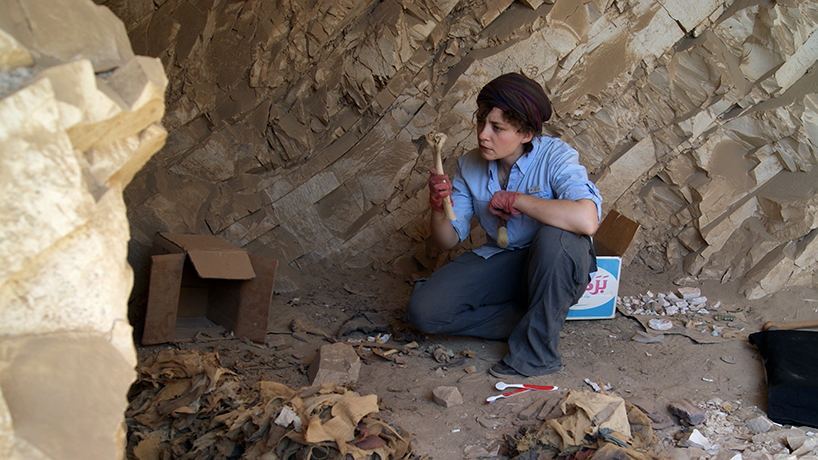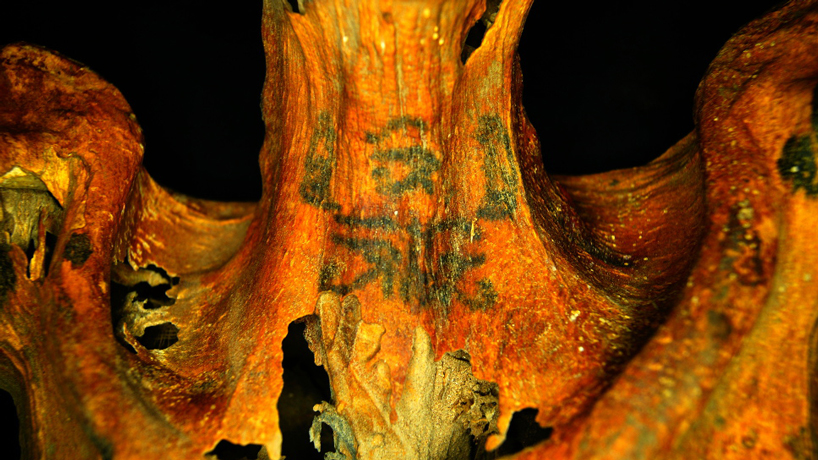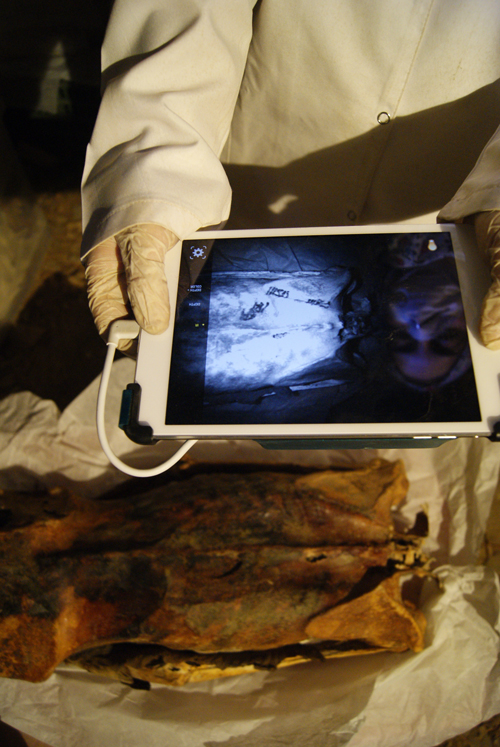
UMSL Assistant Professor of Anthropology Anne Austin’s research on ancient Egyptian medicine, disease and health networks combines the fields of osteology and Egyptology. She’s discovered some of the only known tattoos on Egyptian mummies. (Photos courtesy of Anne Austin)
Pop culture conjures images of ancient Egyptians in bold eye makeup, jewelry and ornate headdresses. After a recent discovery, it appears one thing is missing: tattoos.
Infrared technology helped Anne Austin, assistant professor of anthropology at the University of Missouri–St. Louis, identify numerous tattoos on seven mummified bodies at Deir el-Medina, an Egyptian archaeological site. According to her findings, the mummies date back at least 3,000 years.
Austin reported her findings at the annual meeting of the American Schools of Oriental Research in September. Since then, her revelation has been featured in numerous national and international media outlets including Fox News, Mashable India, Science News and the Sun.
“The more people read about our new research on tattooing, the more I hope they reconsider the ways we view people with tattoos and the long history of tattooing across cultures,” Austin said. “It is wonderful to bring international attention to the exciting and new research going on in Egypt as well as the excellent research and opportunities we have at UMSL.”
The tattoos had gone unnoticed for years, obscured by papyrus and darkened, embalmed skin. Infrared technology changed that. The human eye can only see a certain range of wavelengths, but infrared photographs allowed Austin to see beyond that range, revealing the tattoos. She was elated when they were uncovered.
“When I first saw the tattoos with infrared, I felt both the thrill of discovery and the magic of this new technology,” Austin told Fox News. “We were able to identify dozens of tattoos in a previous mummy published in 2017, which showed imagery of religious symbols, floral motifs and important animals like the cows of the goddess Hathor.”
The discovery is particularly significant because up until that point, tattoos had only been found on six mummies during roughly 100 years of research on Egyptian archeological sites.
While the identities of the mummies are unknown, it is known that artisans who crafted royal tombs worked at Deir el-Medina. All seven bodies Austin examined were female, and she told Science News that their tattoos likely indicate roles as healers or priestesses, rather than artisans.
The number and placement of the tattoos varied on each mummy, but one stood out among the rest. She was marked with more than 30 tattoos on various parts of the body. In addition to the quantity, the symbols are notable. Her tattoos included a cross-shaped symbol not found on the others, as well as several symbols similar to hieroglyphs used in ancient Egyptian writing. Austin said it might indicate she was a religious practitioner.
The tattoos have yet to show a recognizable pattern, but that could change.
“It’s highly likely that with more evidence, we’ll find clearer patterns to the location and symbolism of these tattoos,” Austin told Fox News. “But that will have to wait we’ve conducted more research.”
Media Coverage
Fox News
New York Post
Inked Magazine
Mashable India
News 18
Science News
The Sun
















